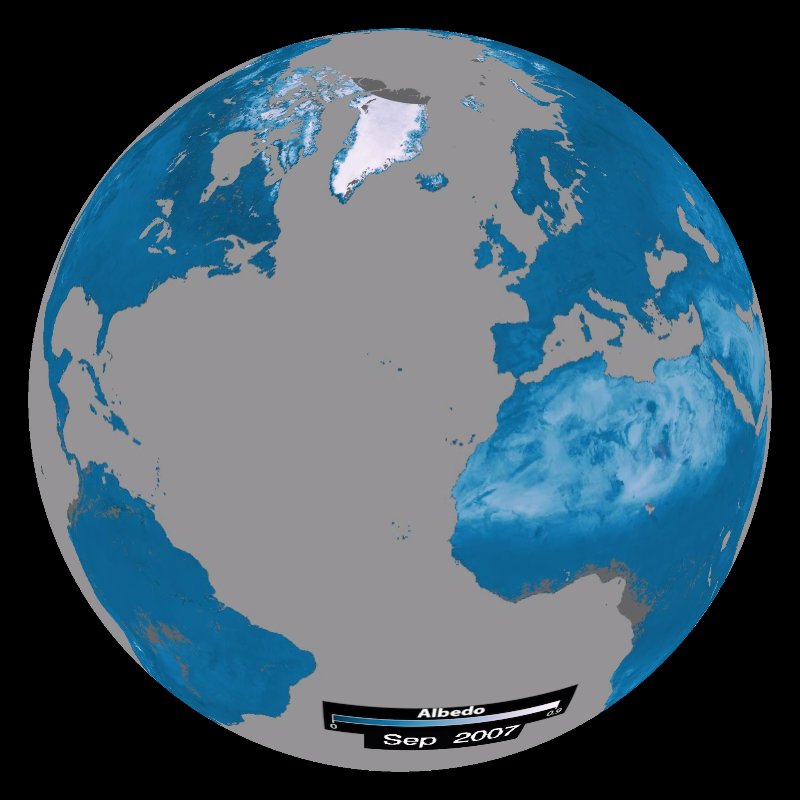ClimateBits: Albedo

This video clip explains albedo, which is the concept that explains that darker colors (like ocean blue) absorb more heat than lighter colors (like snow white) which reflect it.
The icy poles are getting less icy each year. In the Arctic, September usually marks the lowest concentration of sea ice during the year.
As global temperatures increase as a result of human-caused climate change, though, the frozen area of the Arctic Ocean is decreasing. What’s more, with less white snowy area to reflect heat away, and more dark blue ocean to trap heat in, the cycle feeds on itself - we call this a positive feedback loop. Like wearing a black t-shirt on a hot summer day, a darker Earth surface absorbs more and more heat, and less white also decreases the amount of the sun’s energy that bounces straight back into space. The concept of white reflection vs. dark absorption is called albedo. Decreasing the Earth’s albedo and as a result dramatically increasing the temperature in the Arctic has serious direct implications for not only the animals living in the arctic and sub-arctic, but also for folks who live on the coast and below sea level because as ice melts (on ice sheets and glaciers) and oceans warm, sea level rises.
Download an SOS playlist for this module.

This video clip explains albedo, which is the concept that explains that darker colors (like ocean blue) absorb more heat than lighter colors (like snow white) which reflect it.

This dataset shows the seasonality of sea ice—how it expands and contracts—as well as its overall decrease over time.

September marks the lowest level of sea ice in the Arctic each year. This model shows how that minimum level has decreased consistently over the past four decades.